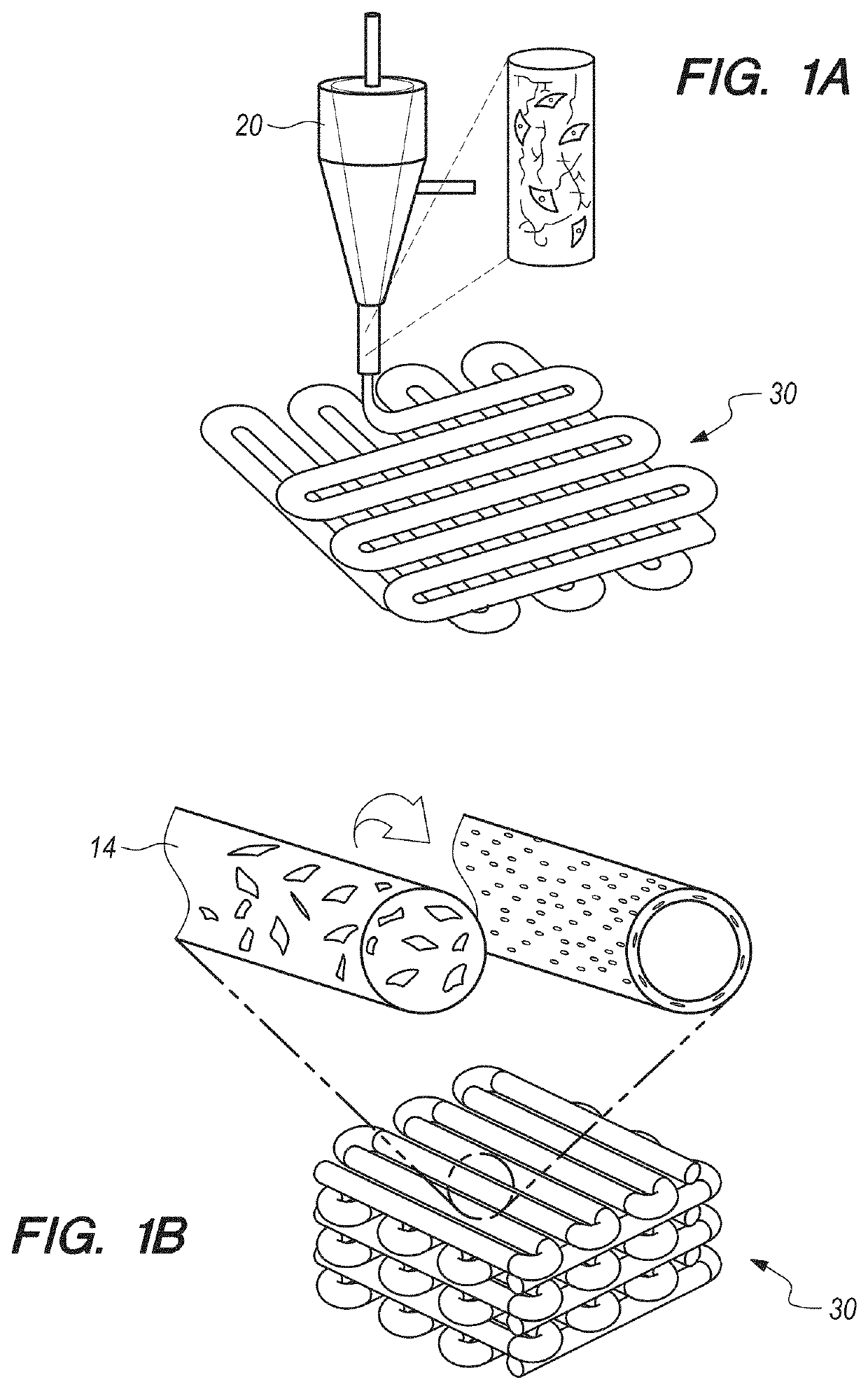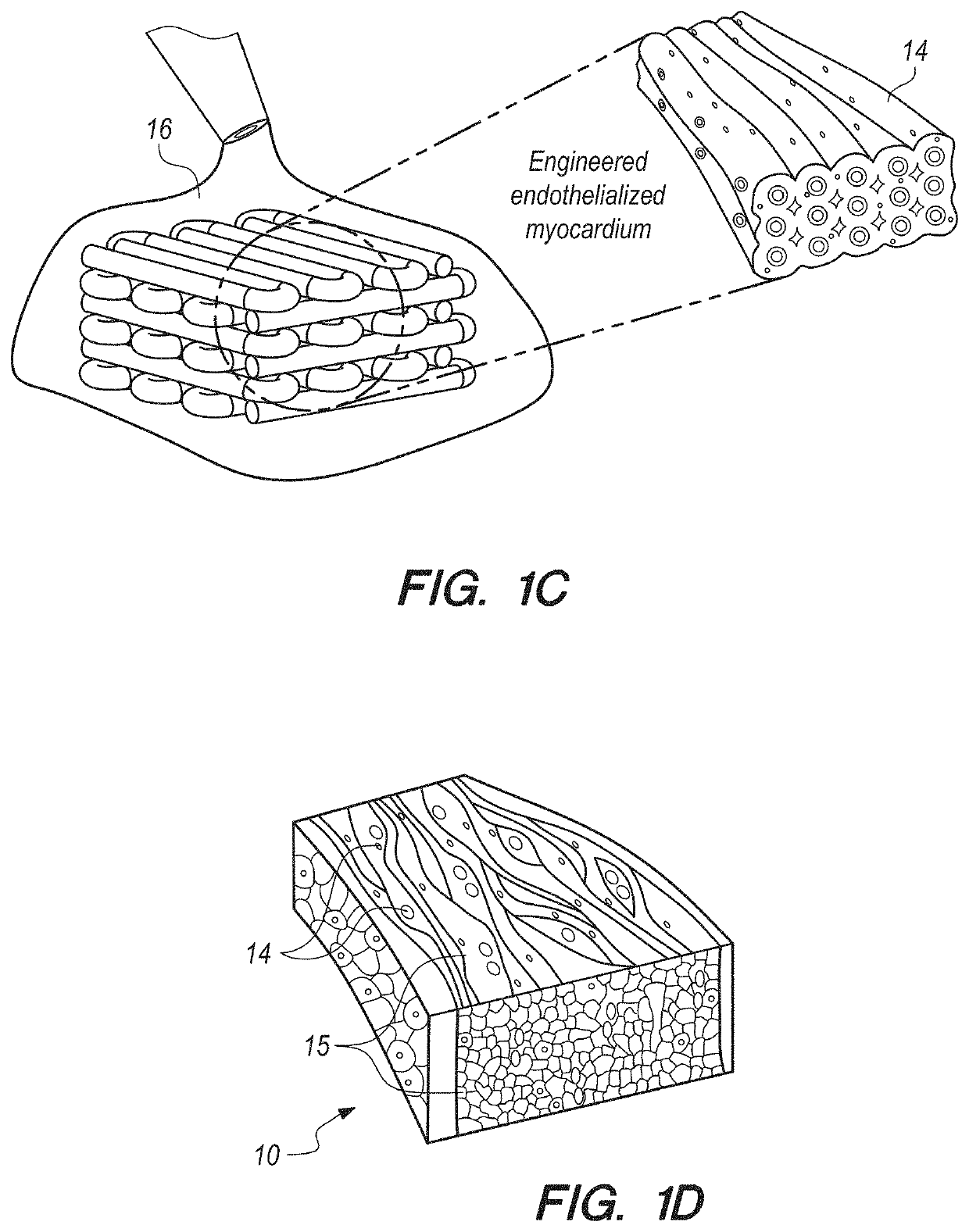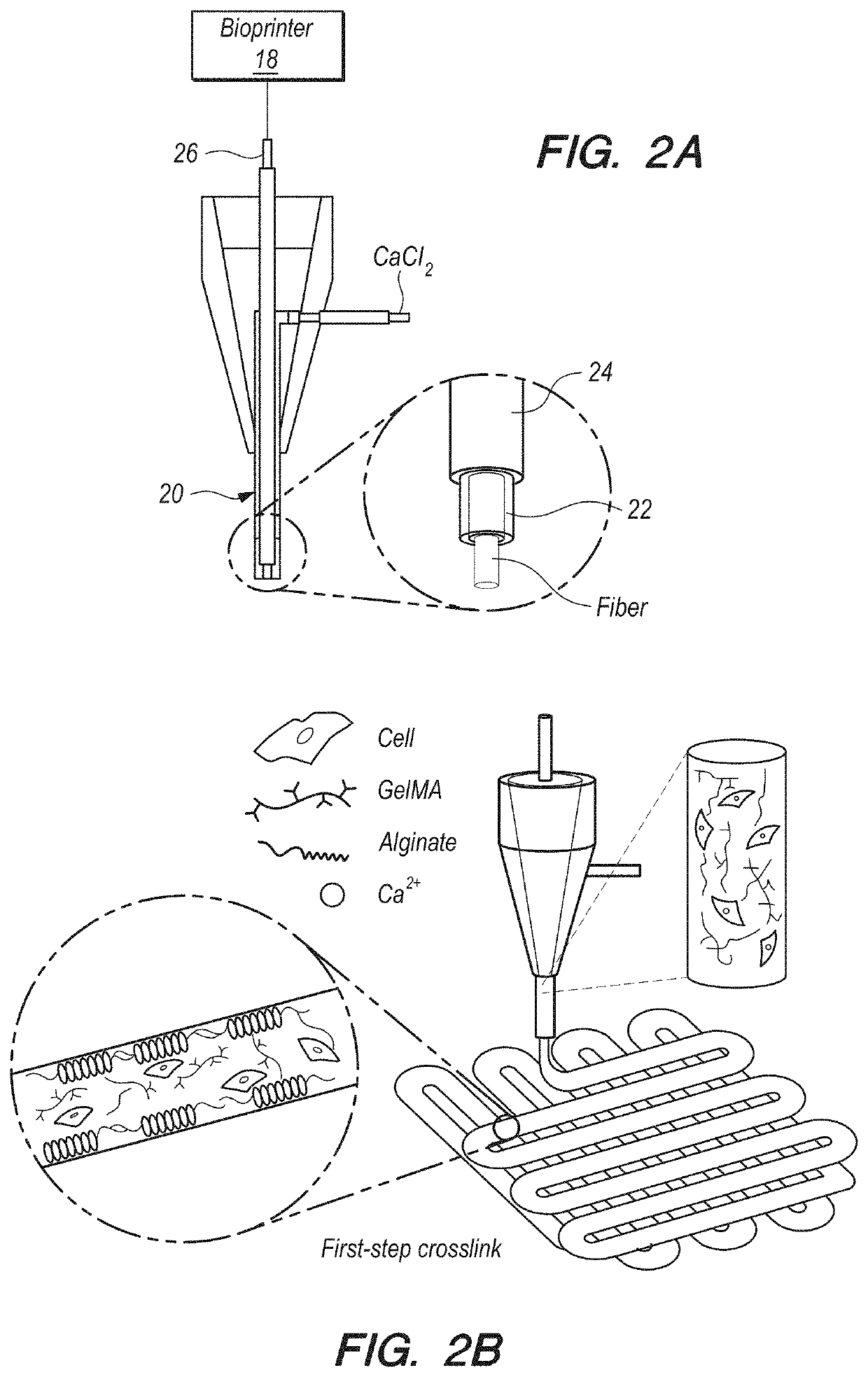Additive Manufacturing of Functional Myocardial Tissue
a functional and myocardial tissue technology, applied in the field of additive manufacturing systems and methods, can solve the problems of affecting the development of biologically relevant cardiac tissues, unable to achieve the directionality characterized by the physiological myocardium of the construct, and the limited self-renewal potential of the mature cardiomyocy
- Summary
- Abstract
- Description
- Claims
- Application Information
AI Technical Summary
Benefits of technology
Problems solved by technology
Method used
Image
Examples
Embodiment Construction
[0086]In brief overview, and referring initially to FIGS. 1A-1C, in this work a novel hybrid strategy based on 3D bioprinting can be presented (as used in this Specification, “bioprinting”, “3D bioprinting” and “additive manufacturing” can be taken to mean the same thing), to engineer endothelialized myocardial tissue 10 (FIG. 1D). Based on the microfluidic technology that has been developed in the prior art, it can be demonstrated that endothelial cells 11 can be directly encapsulated within the bioprinted microfibrous scaffold 30, as shown in FIG. 1A. The cells can gradually migrate towards the peripheries of the microfibers to form a layer of confluent endothelium. Such assembly of the endothelial cells 11 can resemble a blood vessel structure 14 (see FIGS. 1B-1C). The assembly can be enabled by the use of composite alginate-GeIMA bioink with a dual-step crosslinking process, and can be potentially facilitated by the intrinsic polarization tendency of these cells as well as prese...
PUM
| Property | Measurement | Unit |
|---|---|---|
| flow rate | aaaaa | aaaaa |
| pH | aaaaa | aaaaa |
| speed | aaaaa | aaaaa |
Abstract
Description
Claims
Application Information
 Login to View More
Login to View More - R&D
- Intellectual Property
- Life Sciences
- Materials
- Tech Scout
- Unparalleled Data Quality
- Higher Quality Content
- 60% Fewer Hallucinations
Browse by: Latest US Patents, China's latest patents, Technical Efficacy Thesaurus, Application Domain, Technology Topic, Popular Technical Reports.
© 2025 PatSnap. All rights reserved.Legal|Privacy policy|Modern Slavery Act Transparency Statement|Sitemap|About US| Contact US: help@patsnap.com



